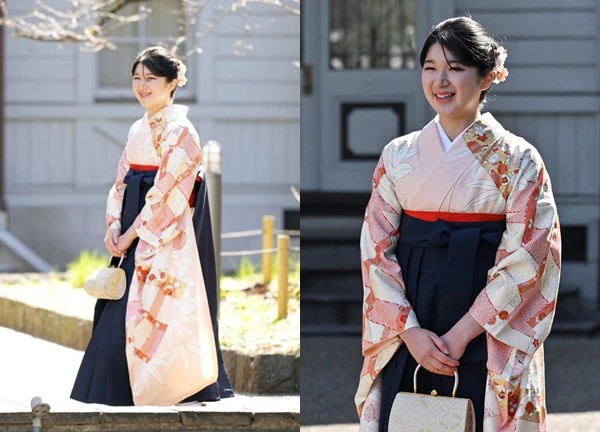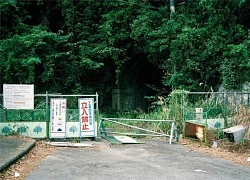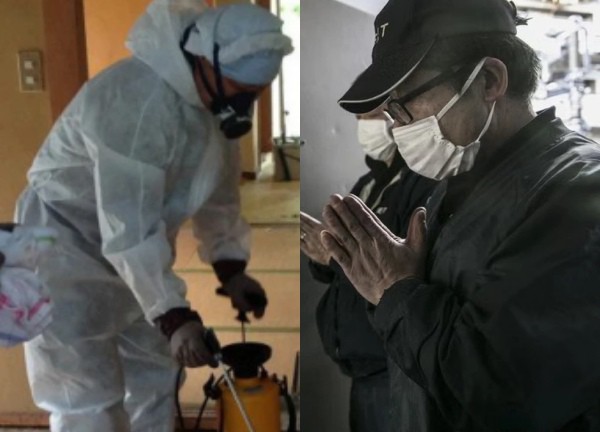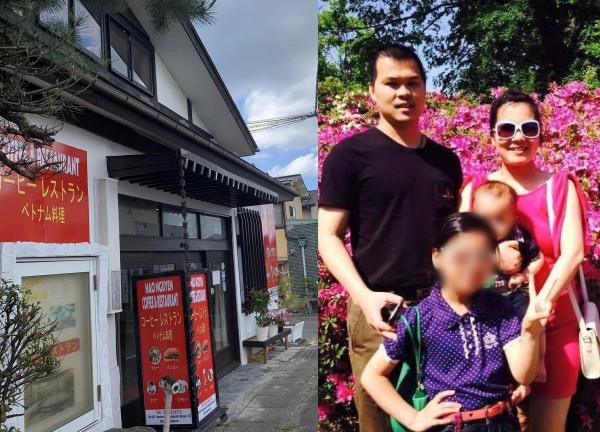The "world's loneliest" princess graduated from university, her sweet beauty caused a fever

1 | 1 Discuss | Share
Crowding on train carriages is unavoidable, causing many times the doors cannot be closed when the carriages are packed with people. That's why the profession of welcoming passengers on board, and sometimes pulling passengers on board, was born in Japan.
Japan is famous for its modern, state-of-the-art railway systems that can carry passengers over long distances in a short time. In Tokyo, with a population of about 35-39 million people, the number of passengers traveling by train far exceeds other means of transport such as bicycles, buses and private vehicles. That's why trains are often overloaded, even though many trains operate day and night.
With the huge number of people using the subway in Japan, crowding on train cars is unavoidable, causing many times the doors cannot be closed when the cars are packed with people. And so a new profession was born to solve the overcrowding situation: Oshiya - customer pusher.
They wear white gloves and are responsible for "stuffing" many people into one car so that the train runs on time. If you think that being an Oshiya only requires strength, the stronger the pusher the better is a mistake.
With the sole purpose of trying to cram as many passengers as possible into each subway train before departure, the "oshiya"'s mission seems leisurely, as they only concentrate for about 90 minutes a day, but must be extremely focused and withstand pressure from "all sides".
The job sounds simple but is extremely difficult as it requires a lot of skills in addition to good health and a 6-month training course. But it is also thanks to this team that Japan Rail, the Japanese subway system management agency, is world-famous for its superiority and punctuality. Through this practical and useful recruitment work, it has made an even greater impression. .
The traffic flow is surprisingly orderly. Teams of pushers - including station staff and specially hired university students - will use their body weight to "cram" passengers into crowded train carriages.
However, when the train becomes too crowded and has no more capacity, the 'pushers' will switch to 'pullers' mode and hold back those who are overloading the train.
"Pullers" are especially important for crowds, explains station director Atsuji Baku, as a few stubborn passengers can slow down the entire train system by refusing to let go and let the train is departed.
The crowd in Shinjuku will be guided by loudspeakers. They lined up in double rows and waited for passengers to get off the train and get off the station. They then move onto the ship and will be assisted by spurs from the oshiya if needed.
It is known that on average, oshiyas are paid an annual salary of 45,000 USD (about 1.1 billion VND) to do this strange job.
In fact, the task of pushing passengers onto the train has also caused many mixed reactions. Some say it helps maintain order and prevent accidents, while others criticize it as an unpleasant and dehumanizing experience. In recent years, technological advances and efforts to reduce overcrowding have reduced the need for staff to push passengers onto trains.
Inspired by Japan, in China, at least in three major cities in Shanghai, Chongqing and Guangzhou, they have been using people to push passengers onto trains during rush hours since 2008.
In February 2017, the capital Madrid also recruited "passenger pushers" to serve the Spanish subway. Especially at Frankfurt Metro when the famous trade fair takes place there, they have sought the help of their patrons since 2015.
According to Amusing Planet, the profession of pushing passengers onto trains actually originated in New York City, USA nearly a century ago. However, many people do not like staff pushing passengers because they push passengers quite violently.
In modern Japan, you may find the staff are more "gentle", but sometimes they still push their hardest and can make customers feel uncomfortable. Many people believe that this job forces employees to push rudely.
Currently, the job of pushing passengers has become obsolete because trains gradually apply automatic door technology, making cramming passengers impossible.
Ms. Dao Thi Minh Thanh, 34 years old, currently living in Japan shared, Because trains are a popular public transportation in Japan, the number of passengers is very large. During rush hours or weekends, especially when incidents occur, trains are always overloaded.
At that time, station staff will be responsible for pushing passengers onto the train. These people are mainly men, behave politely, so most passengers do not feel uncomfortable, because in reality, everyone wants to get on the train, without having to wait for the next one. Tokyo is a crowded city. the world's most populous with more than 37 million people; Almost half of people commute to work by train, outpacing other modes of transport such as bicycles, buses and private vehicles.
Mr. Nguyen Van Trung, 37 years old, who studied in Japan for 2 years, shared that Japanese people are very punctual, so even though the trains are only 5 minutes apart, they still want to get on the earliest one, trying to squeeze into the cars. train: "Because Japanese people are very punctual in terms of time, they don't want to miss a train. During rush hours, it's usually very crowded, so when people get on the train, if the train guard is too crowded, they will will try to push everyone they can into the train car and let the train door close."
The creepy "death village" in Japan and the mysterious tunnel "one goes no return"  Thiên Di16:31:53 04/04/2024Right next to the entrance to the village there is a large tunnel, but it is now unusable because of the huge blocks of stone. It is rumored that those who tried to enter the tunnel did not come back to tell about the village.
Thiên Di16:31:53 04/04/2024Right next to the entrance to the village there is a large tunnel, but it is now unusable because of the huge blocks of stone. It is rumored that those who tried to enter the tunnel did not come back to tell about the village.

1 | 1 Discuss | Share

3 | 1 Discuss | Share

1 | 1 Discuss | Share

1 | 1 Discuss | Share

3 | 1 Discuss | Share

3 | 1 Discuss | Share

2 | 1 Discuss | Share

3 | 0 Discuss | Share

5 | 0 Discuss | Share

4 | 0 Discuss | Share

5 | 0 Discuss | Share

4 | 0 Discuss | Share










5 | 1 Discuss | Report